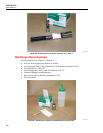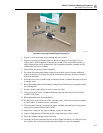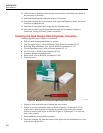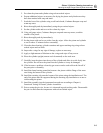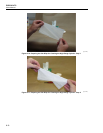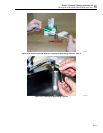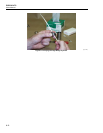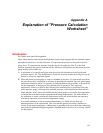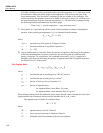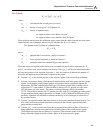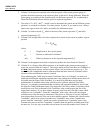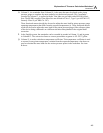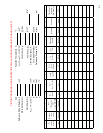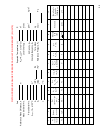
RUSKA 2470
Users Manual
A-2
All of the calculations will be performed to this expected temperature (t ). A final trim would
be calculated to adjust the piston gauge to the temperature of the piston at the time of the
actual measurement. This correction is calculated in the last column of the worksheet. This
column represents the number of grams to be added to the stack of masses for a difference in
the actual temperature from the expected temperature, (
t ). The final trim is computed using
the following formula and loaded onto the piston gauge;
“Temp. Coef.” x (actual temperature – expected temperature)”
C. The Symbol
()
to
A represents the effective area of the piston and its cylinder at atmospheric
pressure, when operating at temperature (
t ); it is obtained from the relation
() ( )
()
tcAA
oto
Δ+= 1
23
where:
()
23o
A = reported area of the piston at 23 degrees Celsius
c = thermal coefficient of superficial expansion
tΔ =
()
23−t
D.
Gravity and Buoyancy Correction: When the masses are applied to the piston in the presence
of the buoyant atmosphere, buoyancy corrections are necessary and are combined with
gravity corrections. For convenience, the combined correction K
1
(or K
2
) is applied as a
multiplier with the result indicating the quantity of apparent mass that is required to produce
the desired force (
F) on the piston.
For English Units
()( )
[]
airamams
ggK
ρ
ρ
ρ
−= //
11
where:
s
g = acceleration due to standard gravity, 980.665 cm/sec
2
1
g = acceleration due to local gravity in cm/sec
2
air
ρ
= density of air in g/cm
3
; see Equation A-4
am
ρ
= density of apparent mass;
for Apparent Mass versus Brass, 8.4 g/cm
3
for Apparent Mass versus Stainless Steel, 8.0 g/cm
3
When selecting masses from the calibration report, assure that the values selected are in the same
Apparent Mass unit of measure that was used to calculate the K
1
or K
2
values.
The apparent mass (Column 9) is obtained from:
1
KFM
A
=
where:
A
M = apparent mass; record in Column 9
F = force required on piston; as found in Column 8
1
K = multiplier which was determined by previous equation



